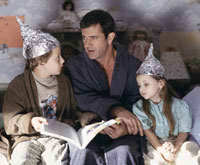Yesterday Mark Fontecchio and I were wrapping up a story on the impact Daylight Savings Time (coming early this year) is going to have on IT. I did an email interview with John Venator, president and CEO of the Computing Technology Industry Association. The full interview didn't make it into the article, but I thought he made a lot of good points, so I'm printing the full interview here:
Why now? This has been on the books forever, why the panic all of a sudden? The daylight saving time issue is one of those unintended consequences of government legislation. When the change in the start and end dates for daylight saving time in the U.S. was included in the Energy Policy Act of 2005, much attention was focused on how the change would save the energy equivalent to 100,000 barrels of oil a day. The issue of how it would affect computers and other electronic devices received some attention in 2005, but the issue soon faded to the background. Part of the problem is that the software patches have to reflect any changes in DST made in countries other than the U.S. (Canada and Mexico, for example) for the fixes to work properly. It’s a country-by-country decision on when DST starts and ends. Vendors were delayed until other countries decided whether to adopt the same dates as the U.S. or other dates. In some cases, those decisions were not made until late in 2006.
Are people expecting planes falling out of the skies? Banking systems to collapse? Or is it small potatoes?The DST issue isn’t on the level of Y2K because the impact and consequences will be much less severe, but it will have an affect on consumers and businesses. It will likely result in multiple little aggravations. At risk are all time and calendar features on corporate E-mail, PDAs, voice mail, and database applications. Some of the things that could be impacted include calendar/scheduling applications; date/time calculations (current and historical); transaction logging; and tariff billing applications. At least at the start of daylight-saving time, some people will likely be an hour early for appointments, meetings and conference calls. They may find that the TV program they thought they’d recorded is actually another program because of the time change.
But given the broad range of technology in use today—and the integration of systems between customers, vendors, and partners, we're recommending to our members that they act now to determine what needs to be done to mitigate the impact of DST 2007 on their organizations. Though six weeks may seem like a long time, if you wait until the Friday before DST and discover that the software patch doesn't work, you may be working 24/7 to get it fixed.
What industries are facing the biggest challenges here?The issue is not so much tied to specific industries as it is to devices. In that regard, virtually any industry could be impacted. Computers, PDAs, VCRs, DVRs, phones, and any other electronic devices that have a time zone setting will require a small software update to accommodate the change in DST. Otherwise, the internal clocks in the devices could be off by one hour for three weeks in this spring and for one hour for one week this fall. Mobile phones which are not connected to the Internet, voice-over-IP phone systems, GPS navigation systems, alarm clocks, and other “smart home” appliances may also be affected. The change can potentially affect tens of thousands of users.
What do the vendors need to do? Are they doing anything?Vendors are working to make their customers aware of the issue and to make the necessary patches and updates available as soon as possible. Here are a few links to manufacturers’ information pages:
CiscoIBMMicrosoftRed HatSunWhat do the IT pros need to do?If IT pros start now, the DST updates can be part of regular and routine system maintenance. Technology resellers and solution providers who manage networks and services for customers should also act now, or they may be working overtime in March to get all their customers updated.
Labels: daylight savings time










